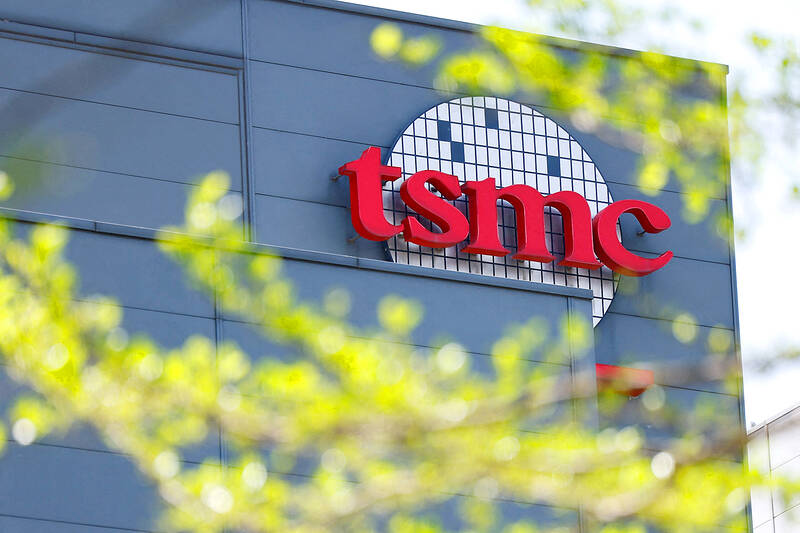TECH TITAN:
Pandemic-era demand for semiconductors turbocharged the nation’s GDP per capita to surpass South Korea’s, but it still remains half that of Singapore
Taiwan is set to surpass South Korea this year in terms of wealth for the first time in more than two decades, marking a shift in Asia’s economic ranks made possible by the ascent of Taiwan Semiconductor Manufacturing Co (TSMC, 台積電).
According to the latest forecasts released on Thursday by the central bank, Taiwan’s GDP is expected to expand 4.55 percent this year, a further upward revision from the 4.45 percent estimate made by the statistics bureau last month.
The growth trajectory puts Taiwan on track to exceed South Korea’s GDP per capita — a key measure of living standards — a year earlier than predicted by the IMF in April. While both are ahead of Japan, Taiwan with this year’s projected GDP per capita of about US$38,000 remains less than half the level of Singapore.

Photo: Ann Wang, REUTERS
Although skewed by the New Taiwan dollar’s surge against the US dollar, Asia’s new pecking order offers another glimpse into how a global spending boom around artificial intelligence (AI) has transformed the economic fortunes of the nation of 23 million people.
Taiwan saw its economy stagnate for decades after key manufacturers started to depart for China to take advantage of cheaper costs there starting in the late 1980s. However, pandemic-era chip shortages vaulted its firms into global prominence, when state leaders and executives from the US to Europe scrambled to secure the semiconductors they needed to keep their economies humming.
The advent of ChatGPT then turbocharged that growth for TSMC and others like Foxconn Technology Group (富士康科技集團), which together assemble the majority of the world’s most advanced chips and servers essential to the development of AI. By contrast, Samsung Electronics Co, a conglomerate whose revenue is equivalent to about 11 percent of South Korea’s economy, has been struggling to catch up.
“South Korea’s economy spans a wide range of industries, including struggling sectors like petrochemicals, while Taiwan is more concentrated in the tech sector and has benefited more from the global AI boom. With Korea’s potential growth rate slipping due to aging and other structural issues, the trend may continue rather than prove temporary,” Bloomberg economist Hyosung Kwon said.
Global demand for high-end tech products from Taiwan and South Korea has kept them both relatively immune to the sweeping US tariffs imposed by US President Donald Trump.
Whereas South Korea’s economy has stagnated, expanding less than 1 percent from a year earlier in the second quarter, Taiwan clocked one of the world’s quickest growth rates with a gain of more than 8 percent.
The Bank of Korea projects full-year growth at 0.9 percent.
Taiwan’s dominance in products underpinning AI development has created boom times for its exports, which exceeded those of South Korea for the first time last month.
That milestone is especially telling given how South Korea’s population and overall GDP are more than double Taiwan’s size.
The rapid appreciation of the NT dollar this year is another factor that helps explain why the country’s GDP per capita has caught up so fast.
It is the best performer among Asian currencies this year with a gain of about 9 percent, after exporters rushed to sell the greenback in part on expectations the authorities would allow it to strengthen to help reach a trade deal with the Trump administration. The South Korean won has gained about 6 percent against the US dollar so far this year.
